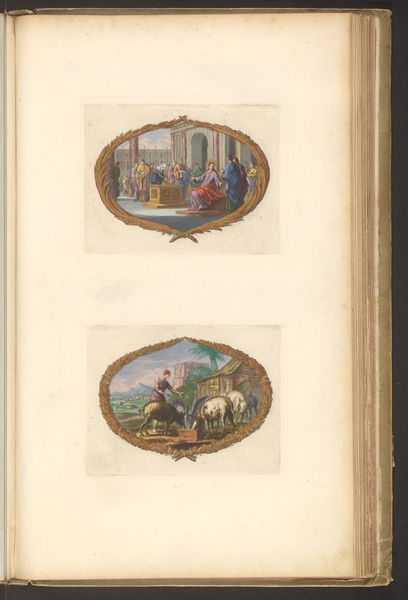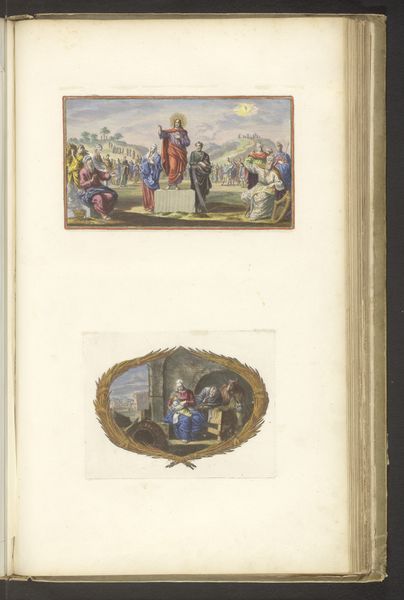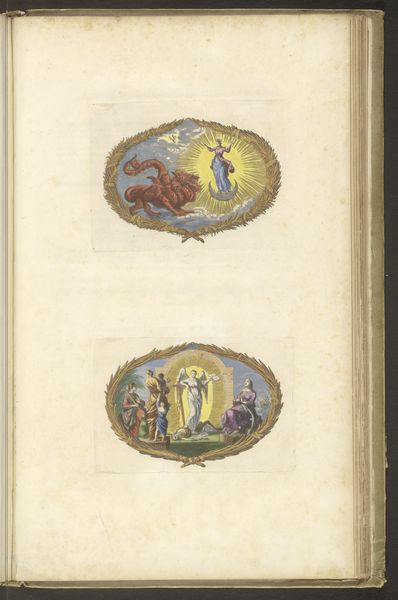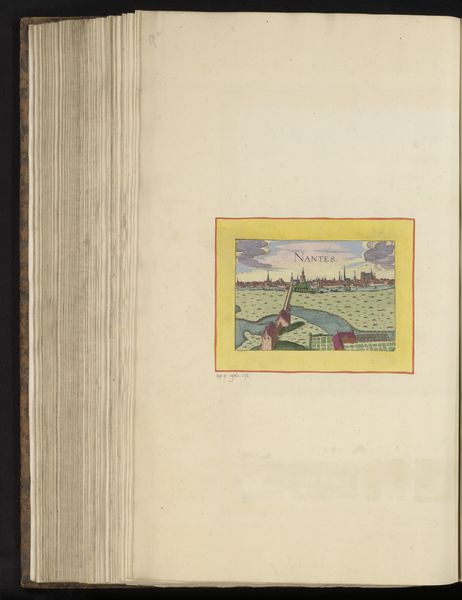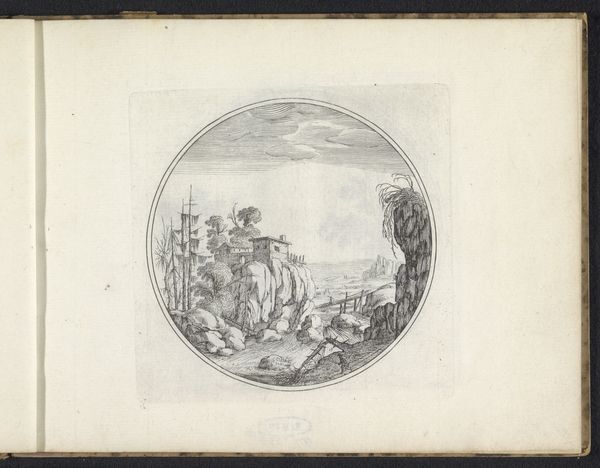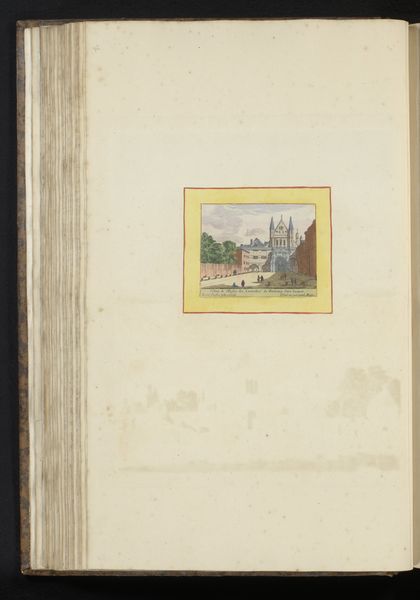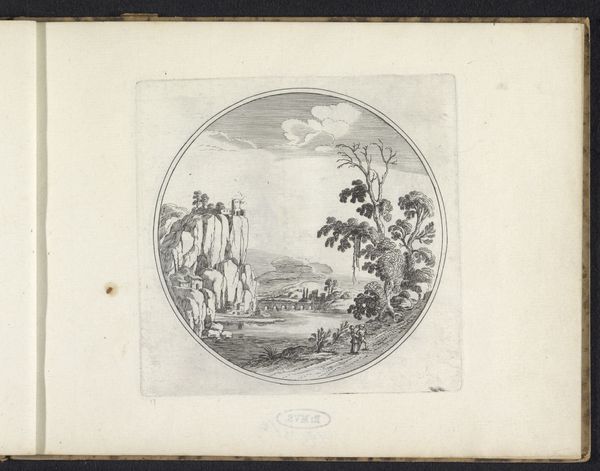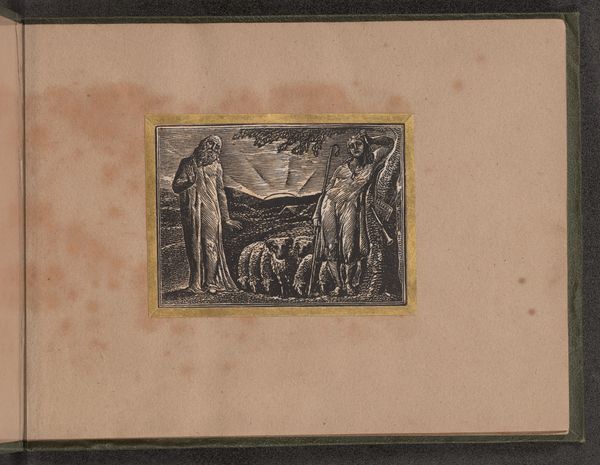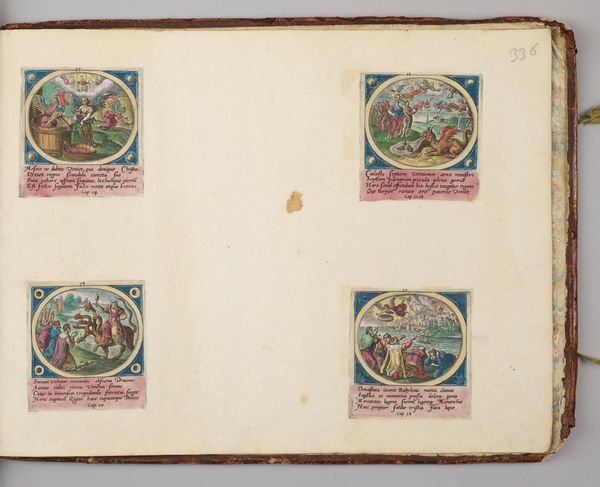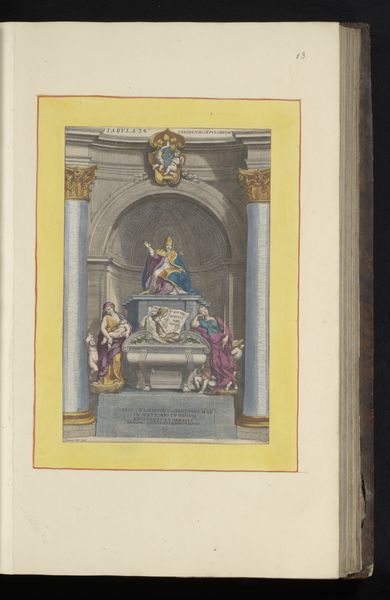
drawing, paper, watercolor
#
drawing
#
aged paper
#
toned paper
#
water colours
#
baroque
#
paper
#
personal sketchbook
#
watercolor
#
coloured pencil
#
watercolour illustration
#
history-painting
#
miniature
Dimensions: height 115 mm, width 150 mm, height 440 mm, width 275 mm
Copyright: Rijks Museum: Open Domain
Editor: This is "Blad met twee vignetten," or "Sheet with Two Vignettes," by Dirk Janszoon van Santen, created around 1700. It's a miniature history painting rendered in watercolor on paper. The paper has aged beautifully. Looking at these scenes, what do you see in terms of the material practices of its creation and its societal placement? Curator: It’s fascinating how the materiality of this sketchbook page shapes its meaning. Think about it: handmade paper, the grinding and mixing of pigments for the watercolor… These processes weren't industrial, but laborious. Each color reflects a specific pigment source, a specific kind of labour. And it's not just the creation. How do you imagine this artwork circulating? Editor: Well, it's a page in a book, so it was probably bound with other sheets... maybe it circulated amongst a learned or wealthy circle, judging from the subject matter and refined execution? Curator: Precisely. This object embodies social class and artistic training. Van Santen likely catered to a market interested in historical and biblical narratives, which subtly reinforced certain ideological positions through their imagery. Think about who commissioned and consumed works like these, and the values they promoted. Were these values being supported through the artist, or questioned by him? Editor: It seems these smaller paintings are very intimate and could offer the artisan the opprotunity to freely and safely explore more political thoughts. Curator: Consider too the very scale – the miniaturization not just reduces costs through materials, but creates precious, personal items to view and display which were often not widely avalible to all social stratifications. These artistic techniques represent how art and society actively create one another. What do you make of it now? Editor: Thinking about it that way, the materiality reveals so much more about the artist's practice, the patronage system, and even social stratification of that time, going beyond simply what's depicted. It highlights how every brushstroke and every page is a product of its circumstances.
Comments
No comments
Be the first to comment and join the conversation on the ultimate creative platform.
